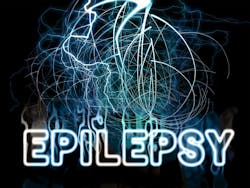A marijuana-like chemical in the brain, mirroring its plant-based counterpart, packs both ups and downs. Epileptic seizures trigger the rapid synthesis and release of a substance mimicked by marijuana’s most psychoactive component, Stanford University School of Medicine investigators have learned.
This substance is called 2-arachidonoylglycerol, or 2-AG, and has the beneficial effect of damping down seizure intensity.
But there’s a dark side. The similarly rapid breakdown of 2-AG after its release, the researchers found, trips off a cascade of biochemical reactions culminating in blood-vessel constriction in the brain and, in turn, the disorientation and amnesia that typically follow an epileptic seizure.
The Stanford scientists’ findings, reached in collaboration with colleagues at other institutions in the United States, Canada and China, are described in a study in Neuron.
About one in every hundred people has epilepsy. The majority of epileptic seizures originate in the hippocampus, a brain structure buried in the temporal lobe.
2-AG is an endocannabinoid, a member of a family of short-lived signaling substances that are the brain’s internal versions of the psychoactive chemicals in marijuana. 2-AG and these plant-derived psychoactive chemicals share an affinity for a receptor, known as CB1, that’s extremely abundant on the surface of neurons throughout the brain.
Endocannabinoids are understood to play a role in inhibiting excessive excitement in the brain. When excitatory neurons, secreting chemical “go” signals, exceed a threshold, they induce the production and release of endocannabinoids, whose binding to CB1 on an excitatory neuron acts as a brake, ordering that neuron to chill out a little.
But 2-AG is almost immediately converted to arachidonic acid, a building block for inflammatory compounds called prostaglandins. The researchers showed that the ensuing increase in arachidonic acid levels resulted in the buildup of a particular variety of prostaglandin that causes constriction of tiny blood vessels in the brain where the seizure has induced that prostaglandin’s production, cutting off oxygen supply to those brain areas.
Oxygen deprivation is known to produce the cognitive deficits — disorientation, memory loss — that occur after a seizure, Soltesz said.

